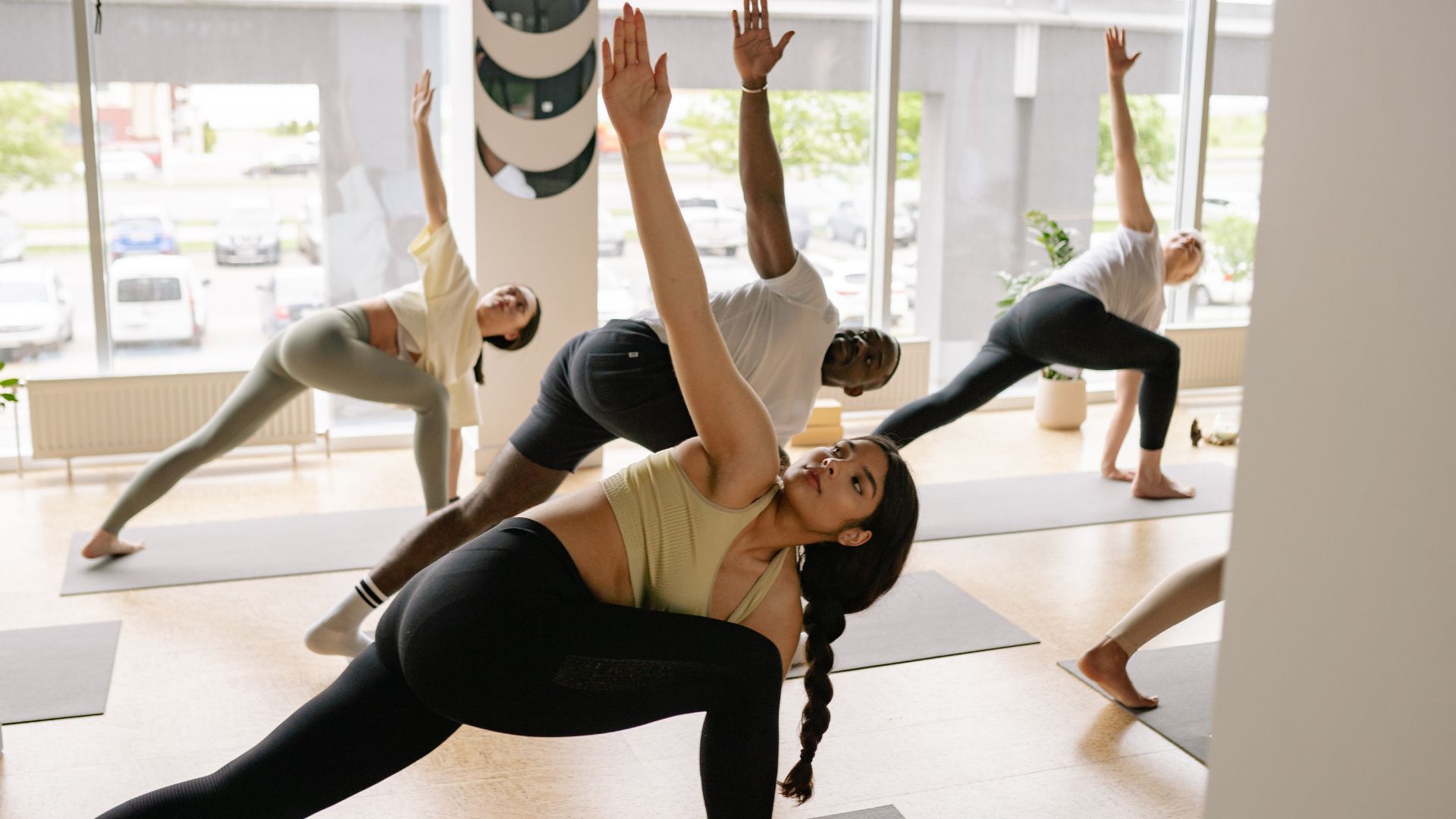In today’s fast-paced world, the pursuit of mental and physical well-being has never been more essential. Among various practices that aid in achieving this balance, yoga benefits stand out as a holistic approach to enhancing overall health. Incorporating ancient wisdom with modern scientific understanding, yoga offers a plethora of advantages for both the mind and body.
Yoga benefits

Yoga is not merely a series of poses or stretches; it is a comprehensive system designed to improve health and promote peace of mind. The yoga benefits extend far beyond just physical fitness. By integrating breath control, meditation, and movement, yoga encourages a deeper connection between the mind and body, fostering an environment conducive to healing and self-discovery.
The practice of yoga enhances emotional resilience, builds strength, and increases flexibility. Individuals who regularly engage in yoga often report reductions in anxiety, depression, and stress levels. Furthermore, many find that their ability to concentrate improves, leading to heightened productivity and creativity. This section breaks down some of the multifaceted benefits of yoga and how they manifest in our daily lives.
Physical Health Improvements
Engaging in regular yoga practice can lead to significant improvements in physical health. Through a wide variety of postures and breathing techniques, yoga strengthens muscles, enhances cardiovascular function, and promotes flexibility.
The asanas or postures are specifically designed to work on various muscle groups while promoting proper alignment. This results in increased muscular strength and endurance. As the body becomes stronger, individuals experience greater ease in daily activities, from lifting groceries to climbing stairs.
Moreover, yoga encourages better circulation and boosts the immune system. Improved blood flow allows nutrients to reach the organs more effectively, which contributes to overall vitality. As a result, practitioners often notice a reduction in common ailments, such as colds and digestive issues.
Additionally, yoga aids in weight management. By promoting mindfulness and conscious eating habits, practitioners tend to make healthier lifestyle choices. It also encourages physical activity, which is fundamental for maintaining a healthy weight.
Mental Clarity and Focus
One of the most profound yoga benefits lies in its ability to enhance mental clarity and focus. Through practices such as meditation and breathwork, individuals can cultivate a state of mindfulness that allows them to better process thoughts and emotions.
When we meditate, we create space in our minds, allowing for clearer thinking. This shift leads to improved decision-making abilities and reduces instances of cognitive overload. Practitioners often find that they can navigate challenges with a sense of calmness, which is invaluable in both personal and professional contexts.
Moreover, yoga promotes the development of concentration skills. Holding challenging poses requires intense focus, which translates into other areas of life. The ability to maintain attention enhances productivity and creativity, enabling individuals to achieve their goals more efficiently.
Emotional Regulation
Yoga serves as an excellent tool for emotional regulation. Through the combination of physical movement and mindfulness practices, individuals learn to observe their thoughts and feelings without judgment. This non-reactive stance fosters a deeper understanding of one’s emotional landscape.
As individuals begin to recognize patterns in their emotional responses, they develop greater control over their reactions. Instead of responding impulsively to stressors, practitioners learn to pause and respond thoughtfully. This emotional intelligence is critical for building healthy relationships and navigating life’s complexities.
Furthermore, the community aspect of yoga can provide meaningful social connections. Sharing experiences with fellow practitioners creates a supportive environment, reducing feelings of isolation and loneliness. These connections contribute to overall emotional well-being, providing a sense of belonging and acceptance.
Spiritual Growth
For many, yoga transcends the physical and mental realms, offering profound spiritual benefits. While spirituality is deeply personal and varies greatly among individuals, yoga provides a pathway for exploration and growth.
The practice invites individuals to connect with their true selves, guiding them toward greater self-awareness and authenticity. Through introspection fostered by meditation and reflective practices, practitioners may uncover their values, beliefs, and purpose.
Additionally, yoga encourages compassion and gratitude. As individuals become more in tune with their own experiences, they often cultivate a deeper empathy for others. This expanded perspective fosters meaningful connections, enriching lives and communities alike.
How yoga helps with flexibility and stress relief.
Flexibility and stress relief are often cited as two of the most prominent yoga benefits. Through consistent practice, individuals can experience remarkable changes in both their physical capabilities and their overall sense of calm. This section delves into how yoga facilitates these transformations, exploring the interplay between movement, breath, and mindfulness.
Enhancing Flexibility
Flexibility is not solely about being able to touch your toes; it encompasses a broader range of motion throughout the body. Regular yoga practice gradually lengthens and loosens tight muscles and connective tissues, promoting greater flexibility over time.
Different yoga styles emphasize various aspects of flexibility. For example, Hatha yoga focuses on static holds, encouraging deep stretching in each posture. Vinyasa style links breath with movement, creating a fluid practice that further enhances mobility. Regardless of the style, the consistent engagement of the body in different positions allows muscles to adapt and become more pliable.
As practitioners continue to explore their limits in a safe manner, they become more attuned to their bodies. This awareness helps individuals recognize tension areas, enabling them to release discomfort while practicing. Over time, this not only improves physical flexibility but also fosters a sense of ease and comfort in the body.
Moreover, the emphasis on proper alignment in yoga helps prevent injuries. By learning to move correctly through various postures, practitioners can maintain joint health and avoid strain. This foundation of strength and flexibility leads to a more active lifestyle, free from discomfort.
Stress Relief through Breath and Movement
The connection between breath and movement is at the core of yoga practice. Deep, intentional breathing activates the parasympathetic nervous system, triggering relaxation and significantly reducing stress levels.
Throughout yoga sessions, practitioners are encouraged to synchronize their breath with their movements. This rhythm establishes a meditative flow, allowing individuals to enter a state of mindfulness. As the mind quiets, feelings of anxiety and worry dissipate, promoting an overall sense of tranquility.
Breath control, known as pranayama, plays a crucial role in stress relief. Specific breathing techniques—such as alternate nostril breathing or diaphragmatic breathing—can be employed to soothe the nervous system. When practiced regularly, these techniques can equip individuals with tools to manage stress in everyday situations.
Furthermore, engaging in physical activity releases endorphins, the body’s natural mood lifters. Yoga not only stimulates the production of these chemicals but also encourages a positive mindset. The combination of movement and mindful breathing promotes emotional balance, allowing practitioners to handle life’s challenges with grace.
Mindfulness and Emotional Well-being
The practice of mindfulness in yoga extends beyond the mat, significantly impacting emotional well-being. By fostering awareness of the present moment, individuals gain insight into their thoughts and feelings, empowering them to respond rather than react.
This mindfulness practice creates a buffer against stressors. When faced with difficulties, individuals are less likely to spiral into negative thought patterns. Instead, they can pause, breathe, and assess the situation calmly. This shift in perspective can reduce feelings of overwhelm and anxiety.
Additionally, yoga cultivates self-compassion, enabling practitioners to treat themselves with kindness during challenging times. The practice teaches that it is okay to experience discomfort and difficulty; these are part of the human experience. Embracing this understanding fosters resilience and emotional stability.
The integration of mindfulness and physical movement in yoga leads to a profound sense of well-being. Individuals often report feeling more grounded and centered after a class, equipped with tools to navigate life’s ups and downs.
Building a Sustainable Practice
To fully reap the yoga benefits, it is important to establish a sustainable practice. Consistency is key when it comes to enhancing flexibility and managing stress effectively. Here are some insights on how to build a lasting yoga routine.
Creating a designated time and space for yoga practice helps reinforce dedication. Whether it’s early morning or evening, setting aside time for oneself fosters commitment. Additionally, choosing a comfortable, inviting space can enhance the overall experience.
Exploring different styles of yoga can help individuals find what resonates with them. Some may prefer the calming nature of Yin yoga, while others thrive in the dynamic flow of Power yoga. Finding a style that aligns with personal preferences makes it easier to stay engaged.
Furthermore, incorporating elements of mindfulness into daily life can amplify the benefits of yoga. Simple practices like mindful breathing or taking short breaks to stretch throughout the day can keep individuals connected to the principles learned on the mat.
By cultivating patience and self-awareness, individuals can experience gradual transformations. Flexibility and stress relief are not simply attained overnight; they require commitment and practice. However, the rewards—both physical and emotional—are well worth the journey.
Conclusion
In conclusion, the transformative benefits of yoga are extensive, encompassing physical health improvements, mental clarity, emotional regulation, and spiritual growth. The practice empowers individuals to navigate the complexities of life with grace and resilience. By fostering flexibility and promoting stress relief through intentional movement and breath, yoga equips practitioners with tools to enhance their overall well-being.
As the world continues to evolve, so too does the understanding of how practices like yoga contribute to a balanced life. With its rich history and adaptable nature, yoga stands as a beacon of hope and healing for those seeking a harmonious existence. Embrace the journey, explore the depths of your practice, and unlock the transformative yoga benefits waiting for you.


